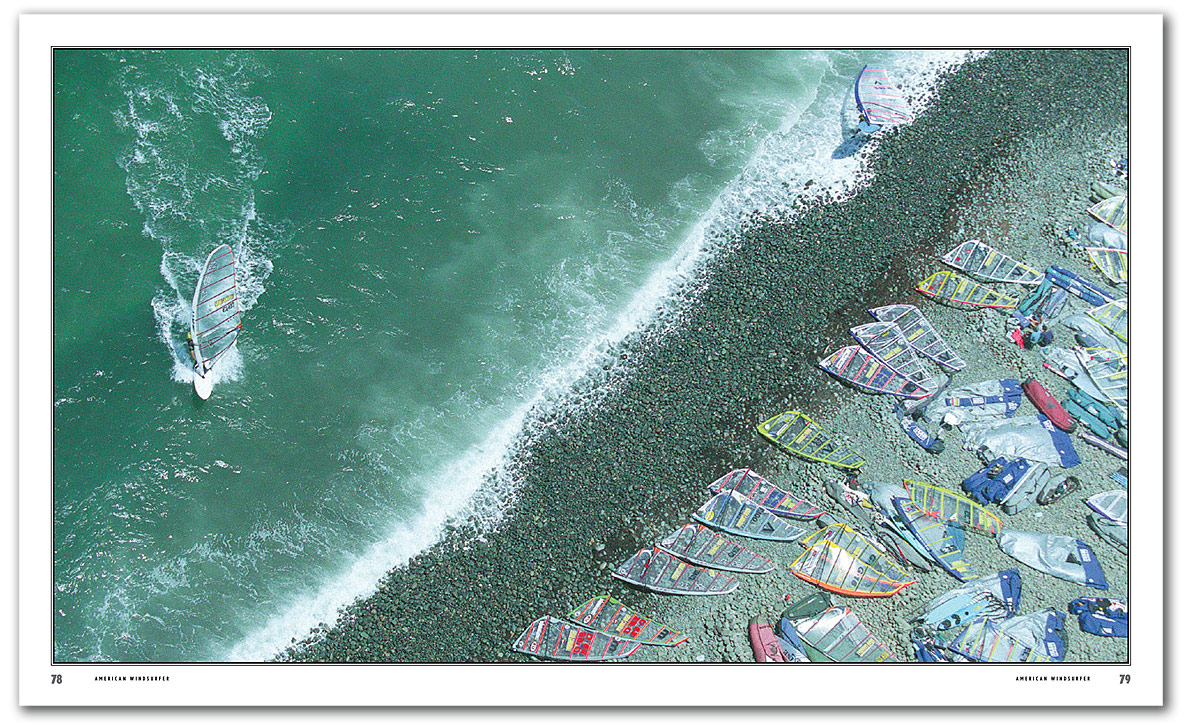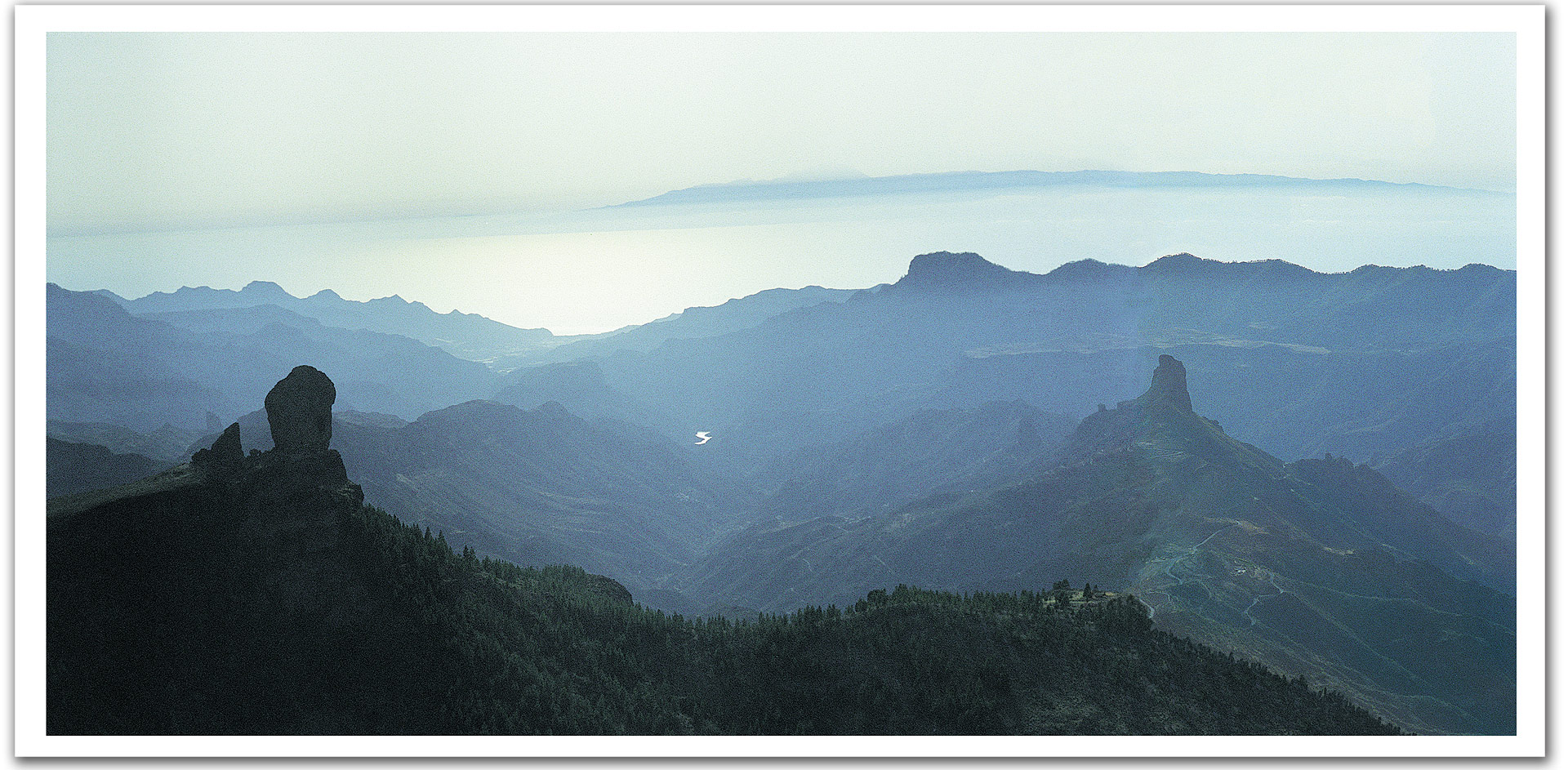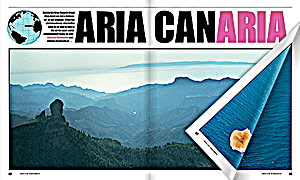
When the wind becalmed, what better thing to do than to take to the air for some aerial photography!? Come fly with American Windsurfer and witness the beauty of . . .
GRAN CANARIA is the high-performance windsurfing capital of Europe. It is the home of many world cup racers of the PWA and the proving pond of future stars. Situated in the center of a group of islands called the Canaries, it is some 60 miles off the coast of Africa and some 800 miles from the nearest continental European port.
The island is referred to as a “miniature continent”. Roughly circular in shape with a central mountainous ridge that runs from the NW to the SE, it delimits and encloses two very dissimilar climatic zones. The trade winds, which are part of the Azores anticyclone, blow throughout the whole year over the island. They come from the NE and NW at 20 to 30 mph in the summer and 30 to 40 in the winter.
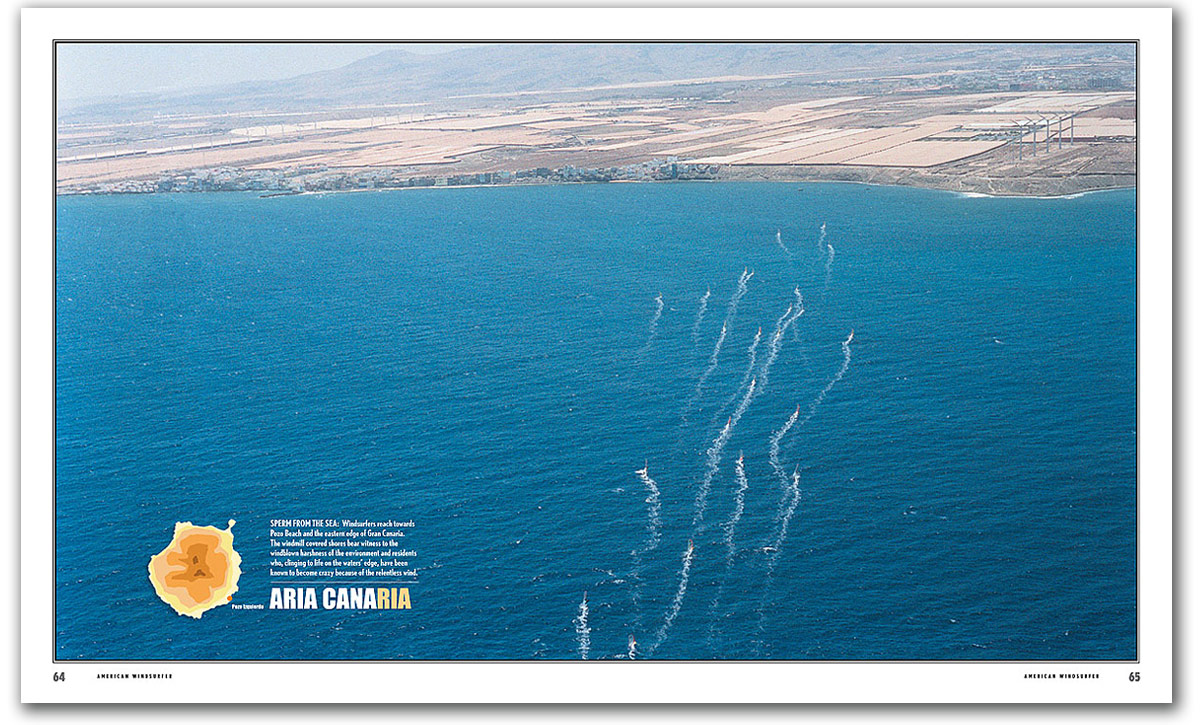
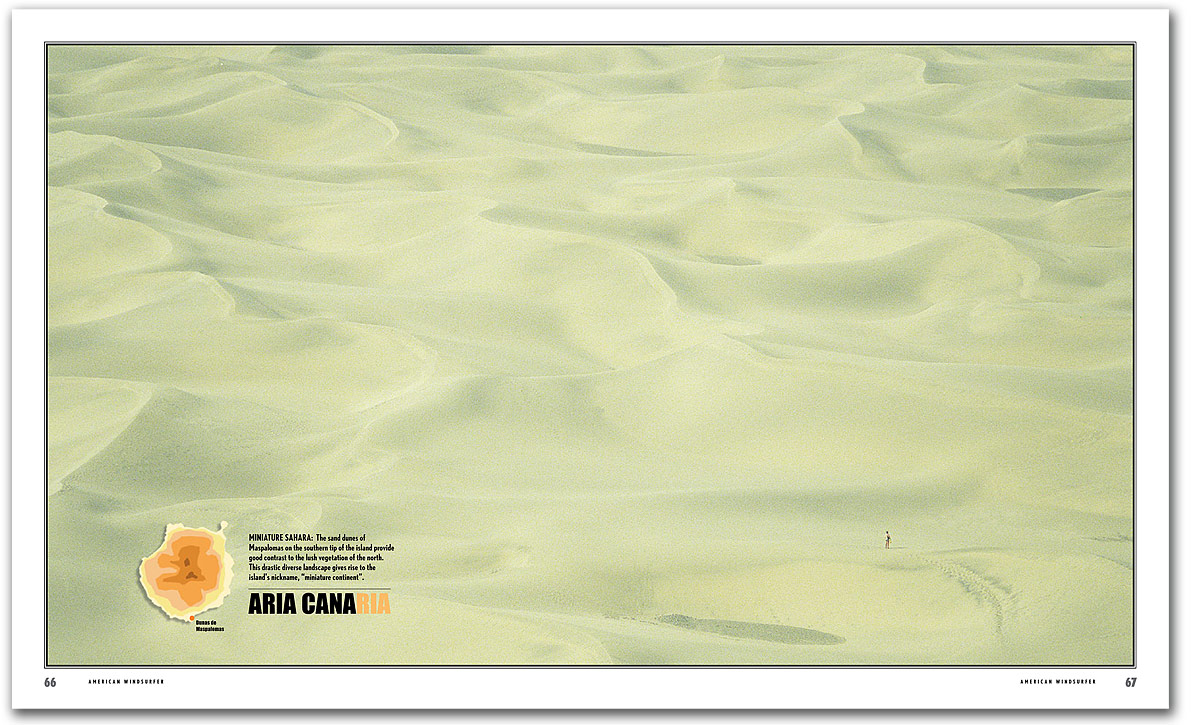
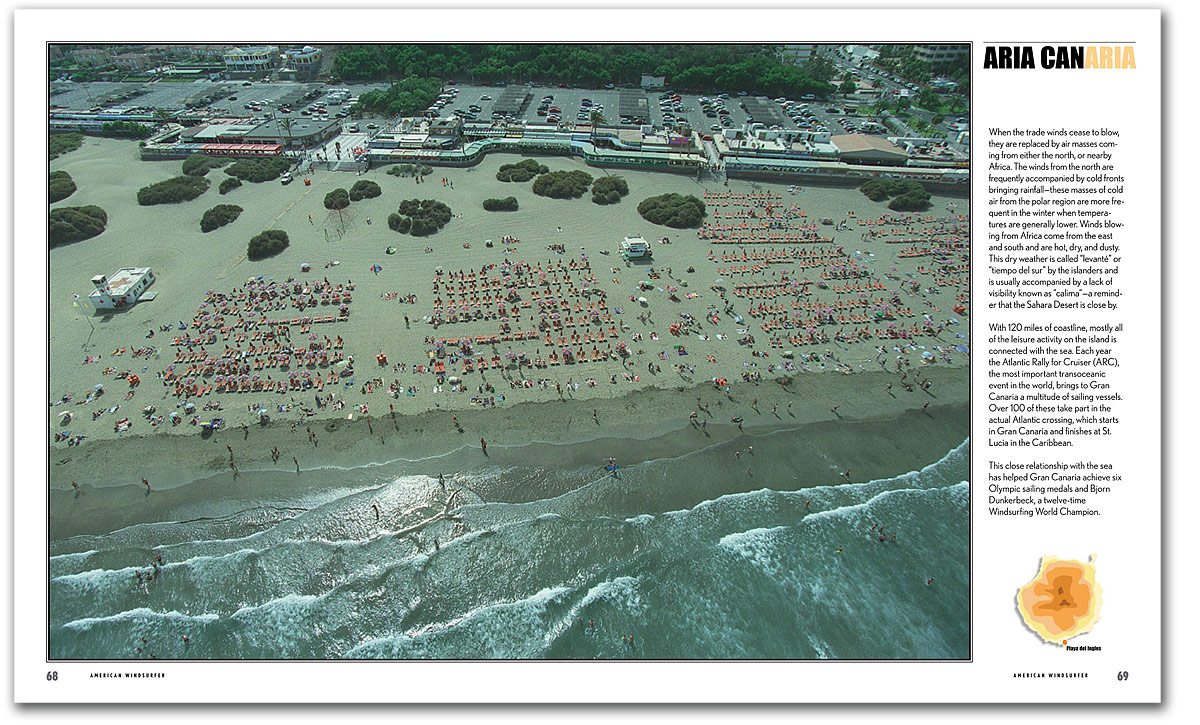
When the trade winds cease to blow, they are replaced by air masses coming from either the north or nearby Africa. The winds from the north are frequently accompanied by cold fronts bringing rainfall—these masses of cold air from the polar region are more frequent in the winter when temperatures are generally lower. Winds blowing from Africa come from the east and south and are hot, dry, and dusty. This dry weather is called “levanté” or “tiempo del sur” by the islanders and is usually accompanied by a lack of visibility known as “calima”—a reminder that the Sahara Desert is close by.
With 120 miles of coastline, mostly all of the leisure activity on the island is connected with the sea. Each year the Atlantic Rally for Cruiser (ARC), the most important transoceanic event in the world, brings to Gran Canaria a multitude of sailing vessels. Over 100 of these take part in the actual Atlantic crossing, which starts in Gran Canaria and finishes at St. Lucia in the Caribbean.
This close relationship with the sea has helped Gran Canaria achieve six Olympic sailing medals and Bjorn Dunkerbeck, a twelve-time Windsurfing World Champion.
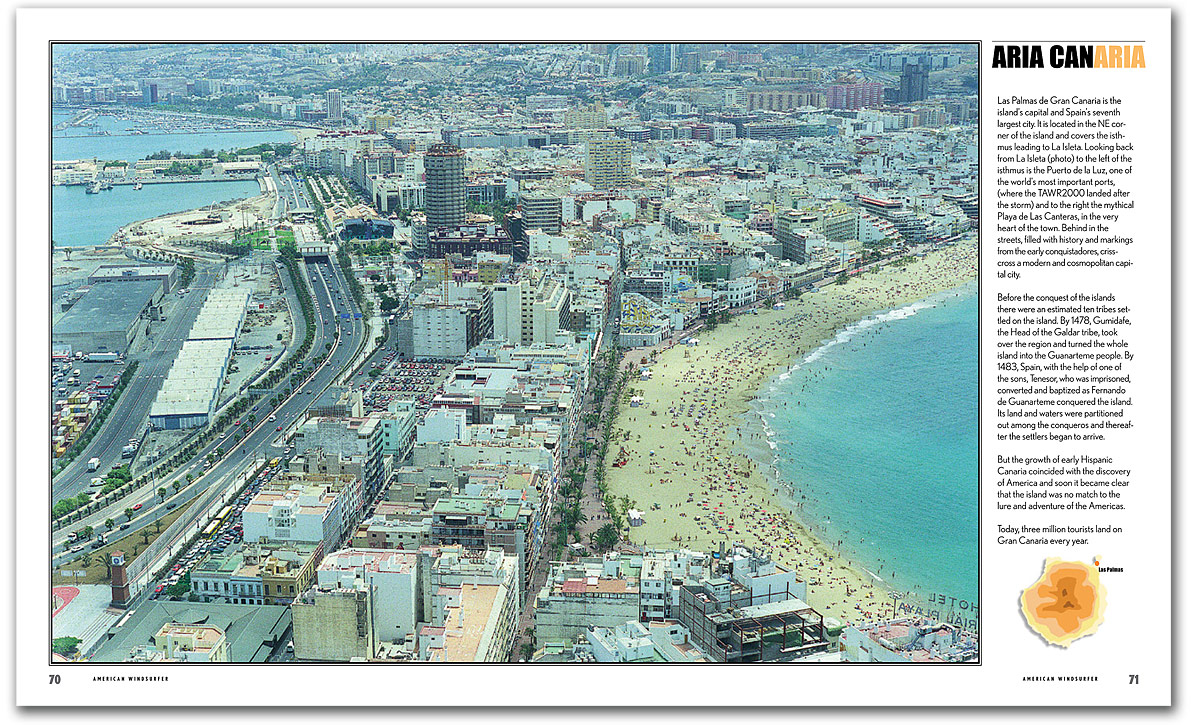
Las Palmas de Gran Canaria is the island’s capital and Spain’s seventh largest city. It is located in the NE corner of the island and covers the isthmus leading to La Isleta. Looking back from La Isleta (photo) to the left of the isthmus is the Puerto de la Luz, one of the world’s most important ports, (where the TAWR2000 landed after the storm) and to the right the mythical Playa de Las Canteras, in the very heart of the town. Behind in the streets, filled with history and markings from the early conquistadores, criss-cross a modern and cosmopolitan capital city.
Before the conquest of the islands, there were an estimated ten tribes settled on the island. By 1478, Gumidafe, the Head of the Galdar tribe, took over the region and turned the whole island into the Guanarteme people. By 1483, Spain, with the help of one of the sons, Tenesor, who was imprisoned, converted and baptized as Fernando de Guanarteme conquered the island. Its land and waters were partitioned out among the conquerors and thereafter the settlers began to arrive.
But the growth of early Hispanic Canaria coincided with the discovery of America and soon it became clear that the island was no match to the lure and adventure of the Americas.
Today, three million tourists land on Gran Canaria every year.
Advertisement
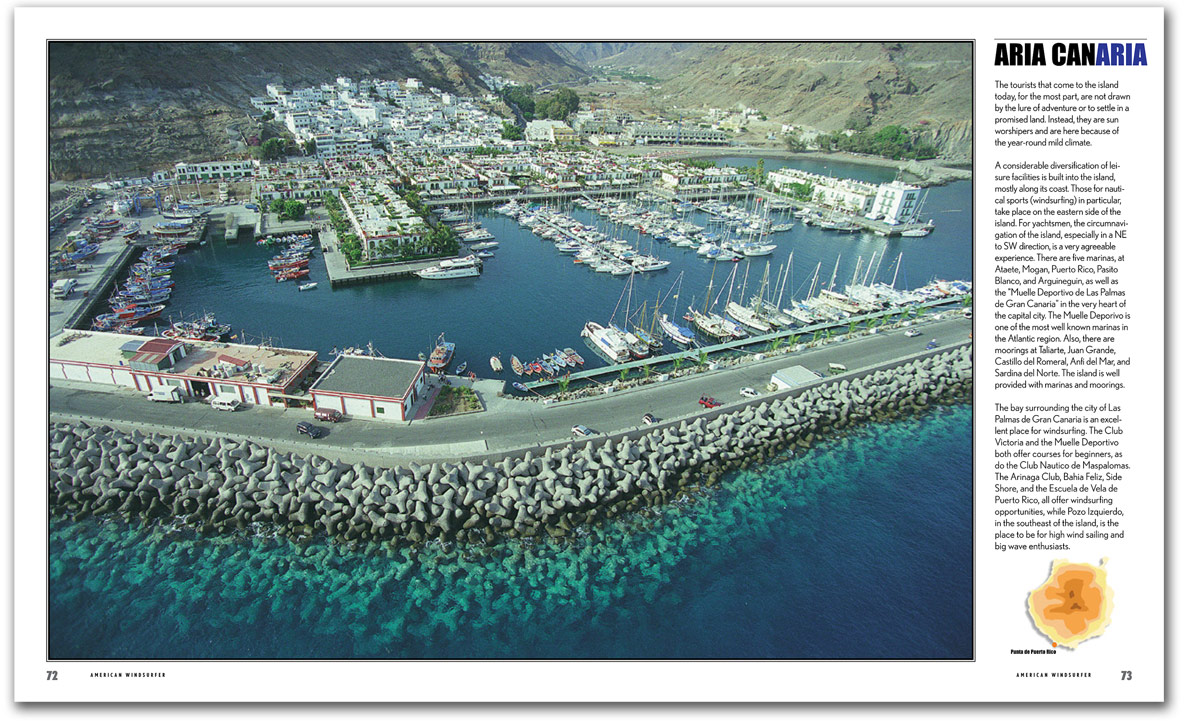
The tourists that come to the island today, for the most part, are not drawn by the lure of adventure or to settle in a promised land. Instead, they are sun worshipers and are here because of the year-round mild climate.
A considerable diversification of leisure facilities is built on the island, mostly along its coast. Those for nautical sports (windsurfing) in particular, take place on the eastern side of the island. For yachtsmen, the circumnavigation of the island, especially in a NE to SW direction, is a very agreeable experience. There are five marinas, at Ataete, Mogan, Puerto Rico, Pasito Blanco, and Arguineguin, as well as the “Muelle Deportivo de Las Palmas de Gran Canaria” in the very heart of the capital city. The Muelle Deporivo is one of the most well-known marinas in the Atlantic region. Also, there are moorings at Taliarte, Juan Grande, Castillo del Romeral, Anfi del Mar, and Sardina del Norte. The island is well provided with marinas and moorings.
The bay surrounding the city of Las Palmas de Gran Canaria is an excellent place for windsurfing. The Club Victoria and the Muelle Deportivo both offer courses for beginners, as do the Club Nautico de Maspalomas. The Arinaga Club, Bahia Feliz, Side Shore, and the Escuela de Vela de Puerto Rico, all offer windsurfing opportunities, while Pozo Izquierdo, in the southeast of the island, is the place to be for high wind sailing and big wave enthusiasts.
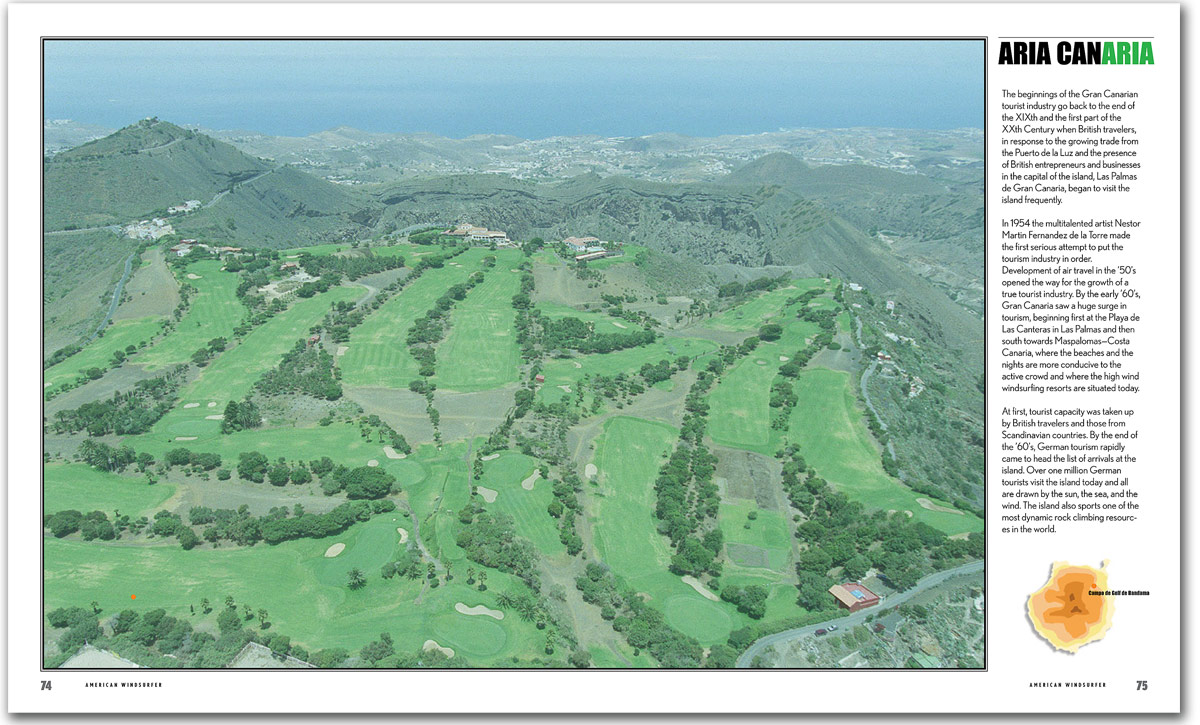
The beginnings of the Gran Canarian tourist industry go back to the end of the XIXth and the first part of the XXth Century when British travelers, in response to the growing trade from the Puerto de la Luz and the presence of British entrepreneurs and businesses in the capital of the island, Las Palmas de Gran Canaria, began to visit the island frequently.
In 1954, the multitalented artist Nestor Martin Fernandez de la Torre made the first serious attempt to put the tourism industry in order. Development of air travel in the ’50’s opened the way for the growth of a true tourist industry. By the early ’60’s, Gran Canaria saw a huge surge in tourism, beginning first at the Playa de Las Canteras in Las Palmas and then south towards Maspalomas—Costa Canaria, where the beaches and the nights are more conducive to the active crowd and where the high wind windsurfing resorts are situated today.
At first, tourist capacity was taken up by British travelers and those from Scandinavian countries. By the end of the ’60’s, German tourism rapidly came to head the list of arrivals at the island. Over one million German tourists visit the island today and all are drawn by the sun, the sea, and the wind. The island also sports one of the most dynamic rock climbing resources in the world.
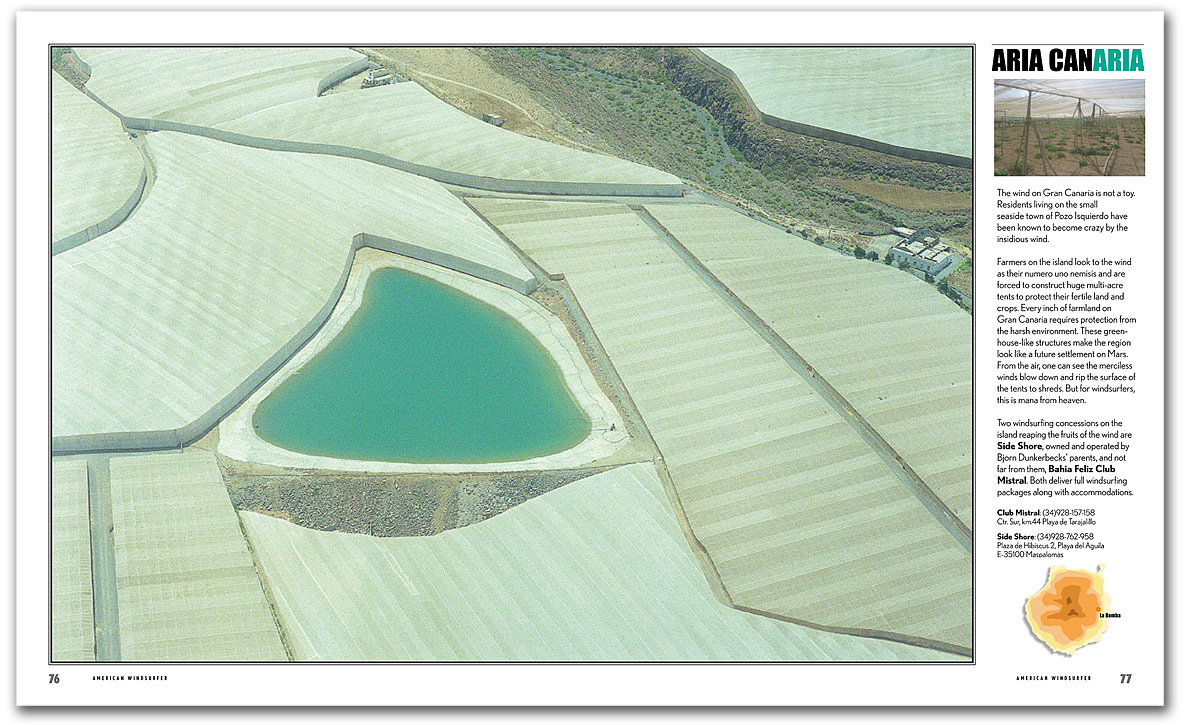
The wind on Gran Canaria is not a toy. Residents living in the small seaside town of Pozo Izquierdo have been known to become crazy by the insidious wind.
Farmers on the island look to the wind as their numero uno nemesis and are forced to construct huge multi-acre tents to protect their fertile land and crops. Every inch of farmland on
Gran Canaria requires protection from the harsh environment. These greenhouse-like structures make the region look like a future settlement on Mars. From the air, one can see the merciless winds blow down and rip the surface of the tents to shreds. But for windsurfers, this is mana from heaven.
Two windsurfing concessions on the island reaping the fruits of the wind are Side Shore, owned and operated by Bjorn Dunkerbecks’ parents, and not far from them, Bahia Feliz Club Mistral. Both deliver full windsurfing packages along with accommodations.
Club Mistral: (34)928-157-158
Ctr. Sur, km.44 Playa de Tarajalillo
Side Shore: (34)928-762-958
Plaza de Hibiscus 2, Playa del Aguila
E-35100 Maspalomas
